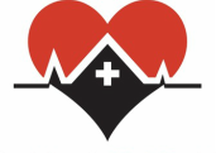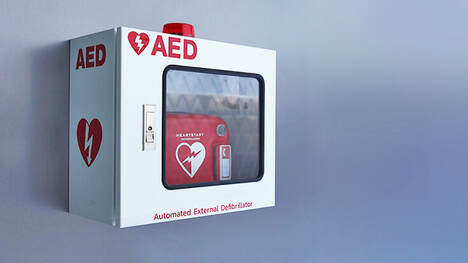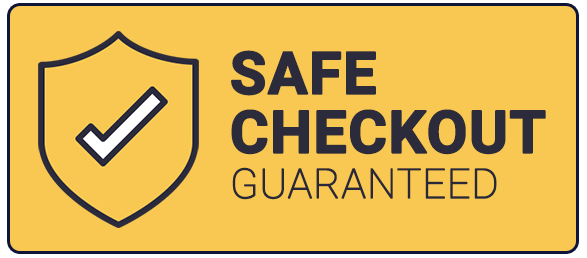How To Operate An AED In 6 Steps!Timing is vital when a sudden cardiac arrest event occurs. The immediate use of an automated external defibrillator (AED) can increase survivability after cardiac arrest. So what are the 6 basic steps to operating an AED? Even though AEDs are designed to be extremely user-friendly, understanding how the specific AED operates and what the specific steps for using the AED can increase your confidence and provide you with the added skills to actively save a life. What is an AED?The AED is a device used to treat victims of cardiac arrest and it most often used in conjunction with CPR. The AED conducts an analysis of a patient’s heart rhythm to determine whether a shock is needed to restore a normal heartbeat and if it determines that a shock is necessary, it delivers a shock to the patient using an electrical current called joules. Unfortunately, there is a common misconception that AEDs are dangerous and could cause harm to the operator or other bystanders. In reality, AEDs are a safe, effective tool that pose little risk when used properly. Why Are AED's Important? An AED is a life-saving device that can significantly increase a patient’s survivability after cardiac arrest. According to the National Institute of Health (NIH) (2022) cardiac arrest victims had a 67% chance of survival when a bystander uses an AED, as opposed to just 43% when they wait for emergency medical responders to arrive. Subsequently, AEDs are an highly effective way to provide emergency care to individuals quickly while waiting for emergency response personnel. How Do you operate an AED?Operating an AED is extremely easy! By following just a few steps, you can administer an electric shock in minutes and help restore the patient’s regular heartbeat. Did you also know that most AEDs include instructions? Many units are even equipped with voice prompts to walk the user through the process. However, despite the voice prompts, it is still imperative to know and understand the basic steps for AED use. the 6 Basic Steps For Operating An AED ARE:1. Assess the scene for safety! First, check the scene and make sure that it is safe to approach the victim. If there is another individual or bystander, have them call 911 for help and grab a first aid kit and AED if not already there. 2. Turn on the AED and follow the prompts! Once an AED is available, turn it on and begin following the prompts. Some devices will call out voice prompts while others show the steps on a screen. Also, listen to see if pad connectors need to be plugged in. 3. Attach electrode pads. Remove any clothing that is covering the victim’s chest. Attach one electrode pad to the upper right side of the patient’s chest, then place the other on the lower left side of the patient’s chest. 4. Check for shockable or non-shockable rhythm. Let the AED check for a shockable rhythm. Make sure that no one is touching the patient and call out “clear" or "stand back"! 5. Administer shock if necessary. If the AED determines a shock is necessary, make sure that no one is touching the patient and call out “clear” or "stand back"! Once it is safe to do so, administer the shock. 6. Administer chest compression CPR. Begin administering CPR with chest compressions. wOULD YOU LIKE TO Learn More?Now that you’ve learned a bit more about AED's, would you like to take one of our CPR/AED classes here at Help-A-Heart CPR? It doesn't matter if you are a future healthcare provider or a stay-at-home mom, getting CPR and AED certified is empowering.
If you have any questions, don’t hesitate to reach out! Our team of training professionals is passionate about CPR and we’re here to help in any way we can. Give us a call at (210) 380-5344 or use our online contact form.
Comments
|
AuthorDr. Tracy A. Jones is the CEO of Help-A-Heart CPR, LLC and an American Heart Association, ASHI, and American Red Cross Master Program Trainer, Instructor, & AHA Faculty Member located in San Antonio, Texas. Archives
June 2024
Categories |
Help-A-Heart CPR, LLC | 1747 Citadell Plaza Suite 101 | San Antonio, Texas 78209 | (210) 380-5344 | [email protected]
Copyright © Help-A-Heart CPR, LLC 2024
100% Certification Acceptance
We promise your employer, school, or agency will accept the certification card we issue to you. If there is a question of acceptance or validity, simply send us an email at [email protected] with full details. We will reach out to the individual/entity and provide accreditation information. If still there’s a question, we will provide you with a full refund of your class fee. It’s that simple.
We promise your employer, school, or agency will accept the certification card we issue to you. If there is a question of acceptance or validity, simply send us an email at [email protected] with full details. We will reach out to the individual/entity and provide accreditation information. If still there’s a question, we will provide you with a full refund of your class fee. It’s that simple.
|
Communities Served
ALABAMA: Birmingham
ARKANSAS: Fayetteville, Hot Springs, Jonesboro, Little Rock NEW MEXICO: Albuquerque TENNESSEE: Knoxville TEXAS: Amarillo, Arlington, Austin, Bandera, Bastrop, Boerne, Brownsville, Comfort, Converse, Corpus Christi, Dallas/Ft. Worth, Del Rio, Dripping Springs, El Paso, Floresville, Fredericksburg, Georgetown, Harlingen, Houston, Junction, Katy, Kerrville, Kingsville, Kingwood, Laredo, Lubbock, Lufkin, McAllen, Midland, New Braunfels, Odessa, Pleasanton, Round Rock, San Angelo, San Marcos, Schertz, Seguin, Taylor, Temple, Texarkana, Tyler, Universal City, Victoria, Waco, The Woodlands |
Why Choose Help-A-Heart CPR?
1. Flexible Scheduling
2. On and Off Location Training Available 3. Casual, Fun Atmosphere 4. Best Price Guarantee 5. All Instructors are AHA and/or ARC certified 6. 5 Star Google Reviews 7. Blended Learning (Online & Skills Check) Available 8. Meets OSHA & College CPR Requirements 9. Get Certified Within 3-4 Hours 10.Certification Is Good For Two Years 11. Official AHA/ARC/ASHI Training Site 12. High Quality Safety Training! |








